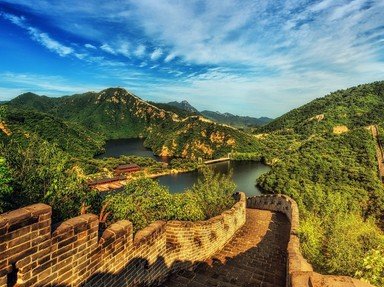Quiz Answer Key and Fun Facts
1. This Ming emperor, who reigned from 1572 until 1620, began his rule as a conscientious and responsible leader, but during the latter decades of his reign he withdrew from his work, tired of the bickering bureaucrats and court intrigues. What was his reign name?
2. As was the case during several Chinese dynasties, interference in government affairs by eunuchs caused conflict among the ranks of the official bureaucracy. A very corrupt example could be found in this man, who rose from food taster of an imperial concubine to a dominant position in the imperial court during the 1620s. What was this eunuch's name?
3. In the 1590s, the Ming economy was already under strain from having to pay tributes to Mongol tribes in order to prevent them from invading from the north and from other public works. Great additional expenditures were required to fight a war against the Japanese beginning in 1592. The bulk of this war took place in which of these areas?
4. Along with the official Japanese threat, other seaborn threats persisted in the south of China, led by Japanese-born pirates. What was the pejorative term given to describe these pirates?
5. Factionalism became a major problem during the latter years of the Ming dynasty. Many scholars during this period were prone to reject the strictly traditional scholastic system that had remained fairly static for the past several centuries. They turned toward the philosophy of an early Ming philosopher who had espoused and endorsed a kind of intellectual eclecticism that was anathema to conservative officialdom. What was this philosopher's name?
6. To combat the trend of scholarly eclecticism, a group of ex-officials who had been dismissed from their positions as a result of factional infighting came together in 1604 to create the Donglin Society. How does 'Donglin' translate into English?
7. Another major problem that plagued China during late Ming times was the inability of officialdom to cope with increasing problems such as natural disaster and famine. One such famine occurred in Shaanxi province, located quite a distance from the capital, during the late 1620s. The inability of local officials to deal effectively with the famine led in part to rebellion in the area. One of the leaders of this rebellion went on to lead a national rebellion that culminated in the felling of the Ming royal house. Who was this ambitious individual of plebeian origin that engineered the downfall of the Ming?
8. While peasant rebellion developed in the west, northeast of China the Manchus began to stir. Prior to becoming the 'Manchu' people, these tribes were known as what?
9. Around 1610, the leader of the Manchus, Nurhaci, broke off relations with the Ming and began to assert dominance over the entirety of the area now called Manchuria. It was Nurhaci's 8th son, Hong Taiji, who would lead a supremely organized force in conquering China for the Manchus, beginning in 1643. Unfortunately, he died before the conquest could be completed and his brother Dorgan took over as regent, accomplishing the crowning of Hong Taiji's son the next year. When this boy, grandson to Nurhaci, became the emperor of the newly formed 'Qing' (meaning 'pure') dynasty, what reign name did he take?
10. In order for the Manchus to enter China proper in 1644, they would have to approach through the Shanhaiguan pass in northern Hebei province. A certain Ming general, commander of the powerful northern army, was forced at this point to make his fateful decision. Should he serve under the rebellious forces led by a peasant (see question 7) or under the Manchu 'barbarians'. What was this general's name?
Source: Author
thejazzkickazz
This quiz was reviewed by FunTrivia editor
coolupway before going online.
Any errors found in FunTrivia content are routinely corrected through our feedback system.
